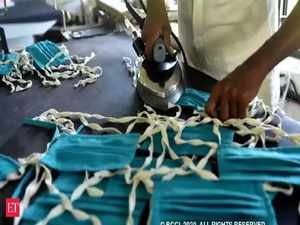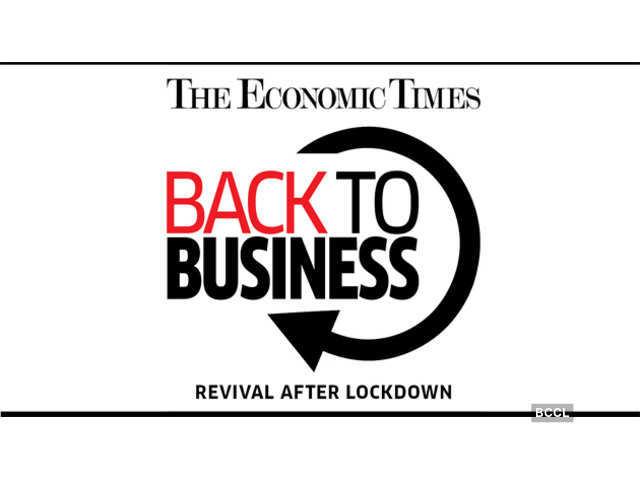
When you build up enough healthcare capacity to take on a pandemic, it is like building up extra capacity in the power sector to take on the peak load, which could be 30% to 80% higher than the base load.

COVID-19 CASES
WorldIndiaConfirmed10,815Deaths353Confirmed1,917,320Deaths119,483Many businesses having been left with zero revenue for one-and-a-half months, the Indian economy will struggle to recover even when the generalised lockdown is lifted on May 3 — unless we plan now to create huge demand and crowd in private investment.
There are many prerequisites of generalised economic revival, such as fixing the broken financial mediation system, which sees banks flush with funds but wholly reluctant to lend. The solution is for RBI to bite the bullet and start buying large chunks of corporate bonds, to both solve the problem of its rate cuts not being transmitted to end-borrowers and to kick-start a large market for actively traded bonds, in place of the small volumes of privately placed bonds that are mostly held to maturity.
Large-scale credit guarantees and interest subventions for bank loans to small and medium enterprises are another pre-requisite, to keep many of these afloat during the ongoing spell of no work. Disbursing subsistence allowances to those rendered jobless is another vital task, preferably via transfers to their mobile phones, mostly linked to Aadhaar.
Agencies

For investment to drive economic recovery, where should the government focus? There are several reasons to focus on healthcare. The sector needs to operate with vigour to combat the virus and supply the world with drugs and medical equipment. That momentum can be built upon.
Another reason is that no modern economy can be built with the ragtag healthcare infrastructure India has. In terms of numbers of doctors, nurses, paramedical staff, medical technicians, medical equipment, capacity for elementary surgery, number of hospital beds, number of intensive care units or any other measure of care preparedness, India could rank with some remote Pacific island. The infrastructure must be built up.
A third reason is to prepare for the next pandemic. As human interaction across distances has gone up over time, so has the spread of infections. The cruellest example is the decimation of the original inhabitants of the Americas. It is estimated that the population declined by 95% in the two centuries since Christopher Columbus reached the Bahamas in 1492. Smallpox, measles, typhus, cholera and other diseases brought along by the Europeans killed off the native population, who had no immunity against these new germs.
The Spanish flu of 1918-19 was spread across the world by demobilised soldiers returning home from World War I. Some 18 million Indians are estimated to have died, when India’s population was about 260 million.
More recently, Severe Acute Respiratory Syndrome (Sars) and Middle East Respiratory Syndrome (Mers) spread out swiftly from their areas of origin and would have wreaked havoc, but for timely intervention.
It would be ridiculous to stop globalisation, which has delivered billions out of the degradation — physical, mental and cultural — of poverty over the last three decades and vastly reduced the gap between the median incomes of the first world and the third world. It makes far more sense to strengthen the healthcare system, to take on the pandemics that accompany globalisation.
Suppose India today had a million intensive care unit (ICU) beds, with as many ventilators, instead of less than 100,000, and the talent to run these, India could have probably avoided a prolonged lockdown and merely relied on testing, quarantine and treatment of those who required hospitalisation. The disease could have spread and produced herd immunity. And the extensive, possibly tragic, loss of livelihoods that we are today struggling to overcome could have been avoided. Of course, those ICU beds would need to be spatially dispersed, not concentrated in a few metros.
When you build up enough healthcare capacity to take on a pandemic, it is like building up extra capacity in the power sector to take on the peak load, which could be 30% to 80% higher than the base load. You build up the capacity to avoid outages when everyone uses power intensively, and you factor the cost of the unutilised capacity during off-peak hours into the pricing of power.
India needs to develop an efficient system of pooling and pre-paying the cost of healthcare for the entire population. The coronavirus has performed one useful service. It has demolished the myth that the elite in their penthouses can stay insulated from the ugliness that is life for the bottom 40% of society. Their wretchedness will seep up the walls of highrises, never mind their decorative paint, and create mould and disease in the penthouses. The only insulation against germs is sanitation of all of society, not just one’s own premises.
Let public investment build up that peak healthcare infrastructure: medical colleges, nursing schools, training for medical technicians, manufacture of assorted medical equipment, synthetic biology, combination of bioinformatics with traditional vaccine and drug development so that computation can extract a possible drug or vaccine candidate from a genomic sequence, an integrated structure of primary, secondary and tertiary care hospitals that uses telemedicine to optimise utilisation of capacity.
Chunks of it can be privatised over time. Building it up will drive growth and serve humanity — India has more young, malleable human talent than anywhere else.
(Views expressed are author’s own)
Source: indiatimes.com

